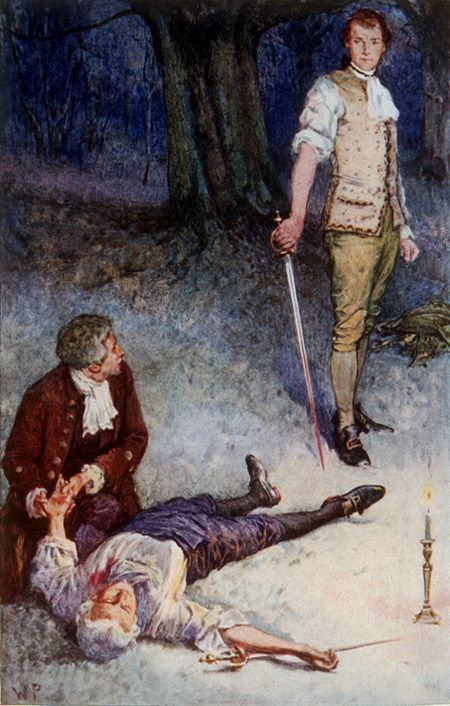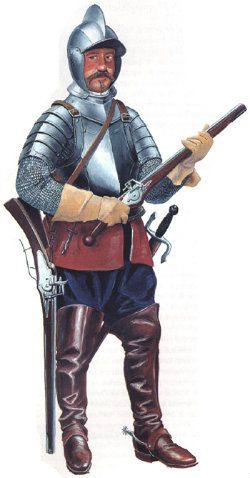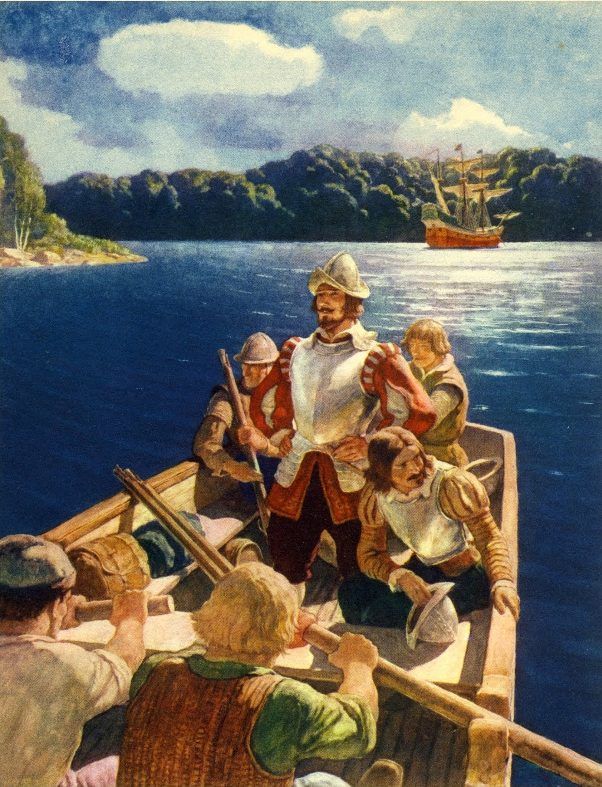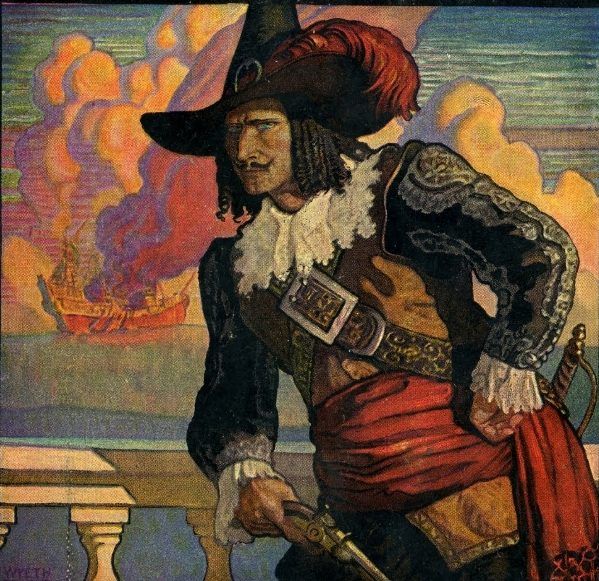Awhile back I drew the analogy between social relations in a cape-and-sword campaign and the
dungeon and even
megadungeon of the old school fantasy roleplaying game. Like the rooms of a dungeon, the non-player characters of the social milieu hold rewards, secrets, and dangers for the adventurers to discover.
Traditionally the referee is responsible for creating this social milieu. My own preference is to create a sandbox,
status quo social setting. Another approach is to tailor the events of the campaign to the player characters, typically after character generation is completed.
There are some distinct advantages to the tailored approach. Adventurers may begin the game with built-in conflicts - frex, the Sworn Vengeance and Secret Loyalty Secrets in
Flashing Blades - to pursue. It is efficient for the referee, reducing the scope of planning compared to many
staus quo settings. It also provides the players with the opportunity to make meaningful choices for their characters; they drive the action, similar to the way characters in a more sandbox setting do. Finally, campaign events and situations tailored to the player characters avoid a potentially frustrating 'hunt for the (plot) hook.'
In a sandbox setting, on the other hand,
challenges may not be as narrowly focused on the player characters as they are in more tailored campaigns. Conflicts tend to arise as a consequence of the adventurers' actions, rather than being introduced through the metagame. Player characters must proactively seek out challenges and adventures in the sandbox, such as listening for rumors or seeking out the sources of legends.
For this to succeed, one of the tricks the sandbox referee must perform is creating a setting which the players
want to engage. Usually this is folded into the pitch for the game - you're heroes exploring lost ruins for treasure! you're space merchants trading among the stars! - and when the rubber meets the road, the referee's sandbox should live up to that promise, so that the adventurers can seek out those treasure-filled ruins or new markets for Terran widgets. Developing a cape-and-sword campaign sandbox means creating a social milieu
which reflects players' expectations about the genre.
My approach to sandbox creation involves building the setting from behind
a veil of ignorance - that is, with no foreknowledge of who the actual player characters will be - leaning heavily on those genre tropes to develop situations which invite the player characters to engage.
So what does this look like in practice? Meet the Montchèvres, a 'dungeon' in my
Flashing Blades campaign.
In the spring of 1625, the family of
Gaston de Montchèvre, vicomte de Praz-de-Lys, takes up residence in a rented Parisian townhouse. Like many of the Savoyard nobility, the vicomte is a soldier, commanding a company of
chevaux-legers (light cavalry) in the ducal army. He served with distinction during the war against the Spanish in the 1610s, earning the notice of the constable of France, and with the constable's introduction, the vicomte travelled to Paris in 1618 where he was received at the court of King Louis XIII; the vicomte's marksmanship and falconry during a hunt at Fontainebleau brought Praz-de-Lys to the notice of the king himself.
As with many of the provincial nobility from the Alpine regions of Savoy, the vicomte de Praz-de-Lys is aligned with the French faction at the ducal court in Torino, opposed to the influence of Spain in northern Italy. Inspired by the marriage of the prince of Carignan, the duke of Savoy's youngest legitimate son, to the sister of the comte de Soissons, a French prince of the blood, the vicomte decided to pursue a French marriage for his own daughter and a military career in the royal army for his eldest son and heir.
The vicomte's plans are also designed to thwart the machinations of a close rival, his wife. Daughter of a Piedmontese cadet branch of a family of Genoese counts,
Lucrezia di Ventimiglia was a pious and dutiful child who's one act of youthful rebellion - a whirlwind affair with a dashing cavalryman - resulted in a pregnancy and a marriage for which neither family was prepared. The viscontessa di Prato-di-Giglio - she refuses to use the French title - has ardent Spanish sympathies, and the vicomte used the move to forestall the viscontessa's schemes to marry their daughter to a pro-Spanish nobleman. She views the French, and in particular their tolerance of heretics at home and alliance with heretics against Catholic princes abroad, as an anathema.
The vicomte's plan is risky. His estate in Chiablese is modest, and his finances are critically overextended supporting another household in Paris along with his commitments at home in Savoy. The vicomte is eager for ducal and royal favor, to add lustre to his family name, and, in this, the campaign against Genoa is an important opportunity for the cavalry commander as well, to perhaps gain entry into the order of SS
Maurizio i Lazarro or even the
Annunziata and a pension, or to augment Catherine's dowry with booty won in battle. The vicomte already achieved an important part of his plan, obtaining a place for his daughter as a lady in the court of the princesse de Carignan.
The viscontessa is, of course, looking for ways to subvert her husband's alliances with the French. Mindful of her responsibilities, the viscontessa is nonetheless pursuing her own ambitions for her children; if she can't prevent a French marriage for her daughter and French service for her oldest son, she is determined that her youngest boy will find an appropriate place in the Church - preferably as part of a Spanish cardinal's curia in Rome - and to that end she's reaching out to the court of the Spanish ambassador in Paris for help.
Catherine de Montchèvre, the convent-educated daughter of Gaston and Lucrezia, is fully aware of the struggle between her father and mother over her future and that of her brothers. Behind a mask of ambivalence she schemes, manipulating her parents' mutual antipathy to her own ends.
François de Montchèvre, the vicomte's heir, has few thoughts for anything other than swords and horses, while the youngest,
Pierre, still clings to his mother's skirts, terrified of his father.
In addition to the family members themselves, the Montchèvre family includes a variety of servants - a lady-in-waiting to the viscontessa, a priest-confessor, maids, valets, and guards.
As noted above, rumors are an important part of sandbox settings, and in this case, one of the rumors -
the one which drew in the adventurers - was that a Savoyard family recently arrived in Paris was seeking to fill positions in the household - tutors both ecclesiastical and secular, a fencing master, a horse master, a banker to manage finances, a lawyer, a steward, a physician, and an apothecary, as well as more menial jobs such as servants and coachmen. The rumor went on to note that the family was paying better-than-normal wages.
Anyone familiar with
Flashing Blades will likely notice that most of those positions relate to careers and jobs which may be pursued by player characters. This presents a number of points of attachment for the adventurers, as does the Montchèvres' connections to other parts of the social setting, such as Catherine's connection at court, Lucrezia's connection to the Spanish ambassador, and Gaston's connection to the constable and the king. The Montchèvres also appear in a number of random encounters around Paris, providing another nexus to the family for the adventurers.
The intrigues of the Montchèvres as described here only scratch the surface, as the players and their characters discovered over our last two game days. In our campaign, the adventurers did indeed accept service with the family, and when one of the player characters attempted to seduce the viscontessa's lady-in-waiting, a duel involving the Cardinal's Guards followed, and the adventurers were exiled from Paris. They took service with a company of mercenaries heading for the wars in Savoy . . .
. . . which is where things take an interesting twist.
Since I hadn't planned for player characters to go to Turin, I generated some random encounters as ideas for events going on around the ducal court; a combination of the tables in the core rules for
Flashing Blades,
the Mythic Game Master Emulator, and
Rory's Story Cubes turned the encounter, "The King/Queen/or Prince, with 2D6 Guards, 1D6 Ministers or Attendants, and 1D6 sycophants (a possible Patron)," plus the Patronage result, "The Patron wishes to have a message taken to someone in a dangerous position (a prisoner in the Bastille, perhaps, or a soldier on the front)," into an attempt to ransom the vicomte de Praz-de-Lys from his Spanish captors!
What made this particularly fun for me as the referee is that the capture of the vicomte by the Spanish was something I wrote
about a year before the campaign even began, before I had any players, before a single character was created. Had the adventurers been in the service of the viscontessa and not been exiled from Paris, they would've heard of the vicomte's capture. Instead, through a wholly unplanned chain of events not contemplated at the start of the campaign, they found themselves trying to free the vicomte from the sinister Don Alvaro de Salamanca just this past weekend.
There is a lot to be said for tailor-made campaigns, but I don't think I could find it as satisfying as the serendipitous twists and turns of a campaign written from behind the veil of ignorance and refereed with the random dials turned to eleven.










